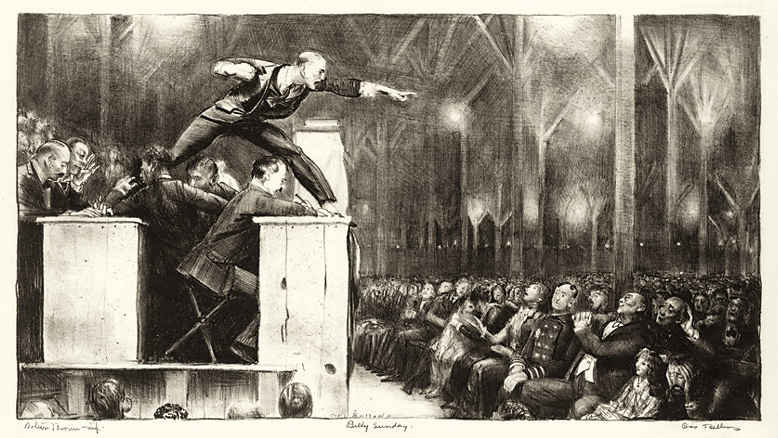This exhibition explores the role of sport and physical culture in the lithographs of George Bellows (1882–1925). Bellows, an esteemed early 20th-century realist, is often classified as an Ashcan artist due to the gritty subject matter he usually portrays. Well known for paintings that capture the dynamism and prosaic aspects of urban environments with dark palettes and painterly modeling of form, he achieved similar compositional effects in his vast body of work in lithography. In 1916 he installed a lithography press in his studio, and from then until his untimely death in 1925, he created just under 200 lithographs. Bellows understood that the monochromatic nature of the medium—its striking contrasts of light and shadow—made it an effective means through which to explore the strenuous activities and pastimes so prized by the artist. The strenuous activities of Bellows’s bodies in motion are enhanced by the unique aesthetic of lithography that shows the results of the artist’s hand at work.

Billy Sunday, 1923, George Bellows (American, 1882–1925), lithograph, 15 3/4 x 22 1/2 in. Lent by D. Canter
In 2018, longtime patron D. Canter gave VMFA The Tournament (1920), Bellows’s ambitious composition picturing the Newport Tennis Club, which is also featured in his masterpiece painting Tennis at Newport (1920) that was recently gifted to the museum by James W. and Frances G. McGlothlin. D. Canter is lending an additional 14 lithographs by Bellows in which the artist effectively gives the viewer a front-row view into the worlds of early 20th-century American tennis, swimming, calisthenics, and, especially, boxing—which was illegal in New York City when the artist made A Stag at Sharkey’s (1917), his most esteemed print, picturing a saloon, that also functioned as a boxing club, owned by Tom Sharkey. With the ropes removed from the foreground, Bellows immerses the viewer into the frenzied action. Also on view is Bellows’s lithograph Billy Sunday (1923), picturing the former professional baseball player, turned traveling evangelist, and who, with his spread legs, cocked-back hand, and pointing finger, resembles an umpire calling out a base-runner.

